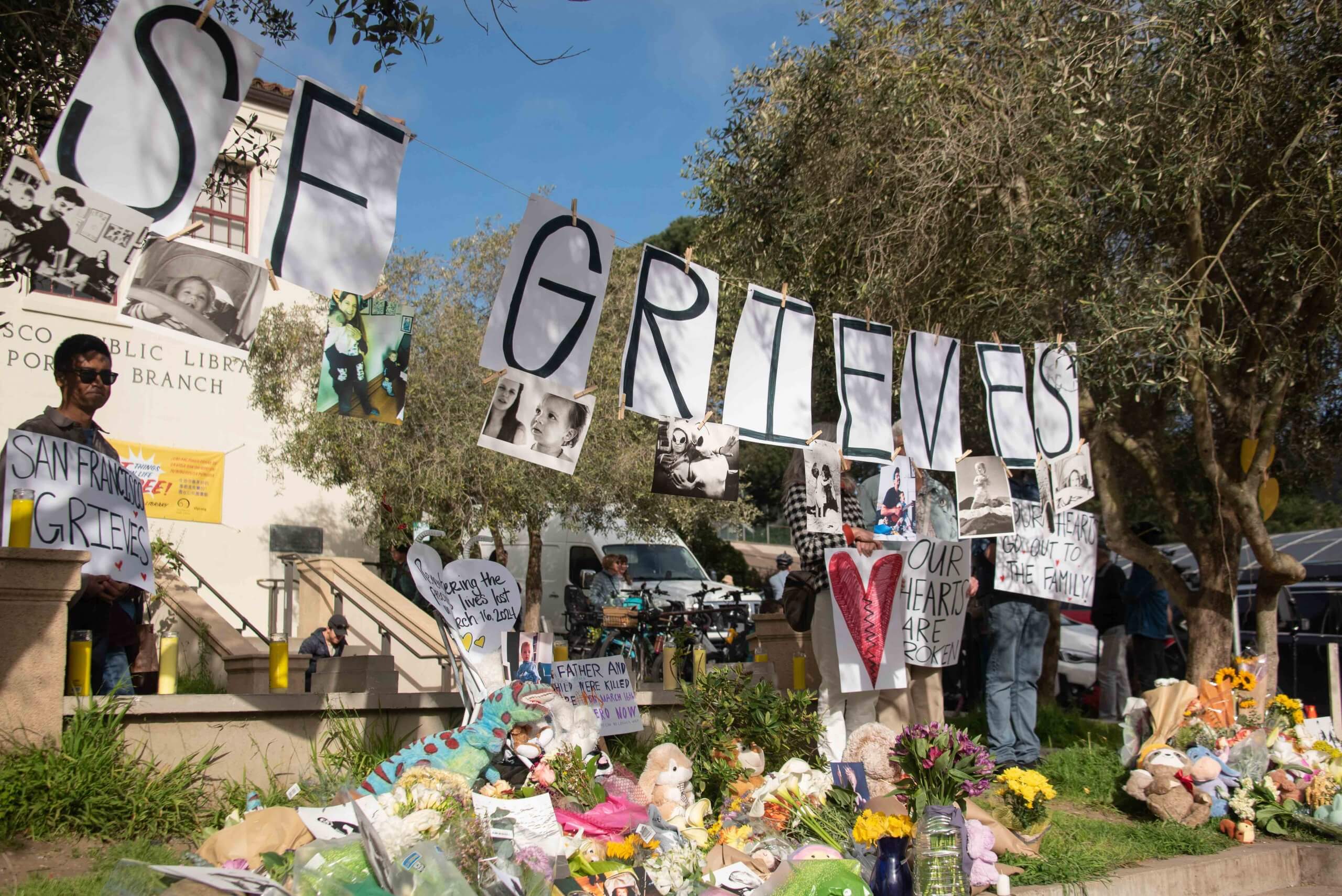Note: GJEL Accident Attorneys regularly sponsors coverage on Streetsblog San Francisco and Streetsblog California. Unless noted in the story, GJEL Accident Attorneys is not consulted for the content or editorial direction of the sponsored content.
On March 16, 2024, a family of four, including a toddler and an infant, was wiped out by a driver who careened into a West Portal bus stop. This is the second time in less than a year that a driver in an SUV killed a child. These events aren’t rare.
Just as the United States is an outlier among peer nations for gun deaths, it is an outlier for road deaths, particularly for people on foot or bikes. Among U.S. states, California is ranked 43rd and 42nd in pedestrian and bicycle safety respectively. Road deaths have been the leading cause of child death—by far—for decades, surpassed by guns only in 2020. That is not because U.S. roads got safer, but because gun deaths got much worse.
These are not "accidents." They are the predictable, preventable result of 80 years of DOT ideology and policy that has set the car as the base unit of transportation and the throughput and storage of cars above human health, safety, and life. The fact that both of the drivers in these horrific crashes were elderly women underscores the inherent danger of the system. This isn't a demographic that is typically thrill-seeking. These were regular people who ended up killing children and their parents. I expect it's awful for them too. But that is what happens when a transportation system is designed to prioritize or even require driving.
Every time a drunk, stoned, old, young, sick, tired, angry, grieved or distracted motorist kills someone, electeds and DOTs put out statements saying how terrible and sad it is but change nothing to make the next crash less likely. To be clear, signs, sentiments, and proclamations about how sad this is without real action are about as useful as thoughts and prayers.
This year, between 30 and 40 people will die on San Francisco roads and thousands will be injured. A good analyst could probably tell you, plus-or-minus 10 percent, where, what times of day, and the general demographics of who will die. I know that because for the last 20 years, there have been about 30 deaths per year. For every person who dies, many others sustain permanent, disabling injuries.
No other branch of civil engineering tolerates this level of system failure. In any other field, if engineers knew that systems would fail catastrophically about 30 times this year and knew when, where, and why that was most likely to happen, they would be required to intervene or shut everything down. And if they didn't, there would be serious professional consequences: firing, fines, loss of license, and, depending on how egregious the infraction, criminal penalties.
Only with traffic engineering is so much serious injury and death not only tolerated but expected. The means to prevent road deaths are well known, publicly available, proven, low cost, and low tech. We are decades behind peer nations in reducing road deaths, especially for people on foot and bicycles. The West Portal tragedy and so many others were completely predictable and preventable. But our leaders and engineers repeatedly fail to act.
The thing that causes death and injuries on American roads is cars. The way to reduce deaths and injuries is to reduce the dose of the hazard: cars. That means slower, smaller, and fewer cars. It means investing in meaningful alternatives to driving and making it possible to walk and take transit places without dealing with continual delay, noise, exhaust, and risk of blunt force trauma from cars. It means affording people outside of cars full personhood and treating their mobility and lives as more important than the convenience and property of motorists.
As an ancillary benefit, designing roads that are safe for pedestrians and cyclists makes them more efficient and safer for people in cars. The road users most frequently hurt and killed by motorists are other motorists. We all deserve to get home safely.
There are calls for the SFMTA to ban cars from the intersection of West Portal Avenue and Ulloa Street and make the broader area safer for all people. They should do that. But the mechanism to improve road safety should not be waiting until there has been a crash with injuries and deaths.
U.S. DOTs are decades behind peer nations in adopting internationally accepted best practices. The failure to address known safety issues is the result of the pernicious ideology underpinning every aspect of U.S. road design: the prioritization of cars over people. This needs to change. The mayor must direct SFMTA to formalize, in policy, the practice and design of roads to prioritize the safety of San Francisco residents over the throughput and storage of cars.
Without concrete action, and I literally mean action in concrete, the next tragedy is a statistical certainty.
***
Isabella Chu is Associate Director of the Data Core at the Stanford Center for Population Health Sciences. Her research interests are the impact of housing and transportation policy on health and equity. The views expressed in this commentary are strictly her own and do not reflect those of her employer.





